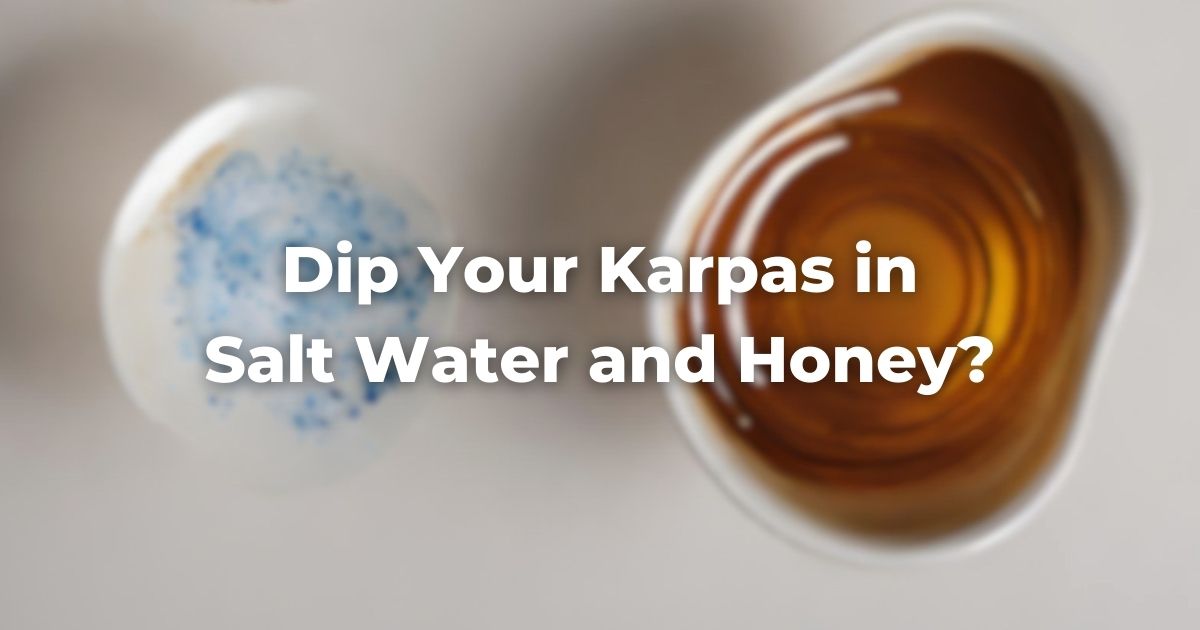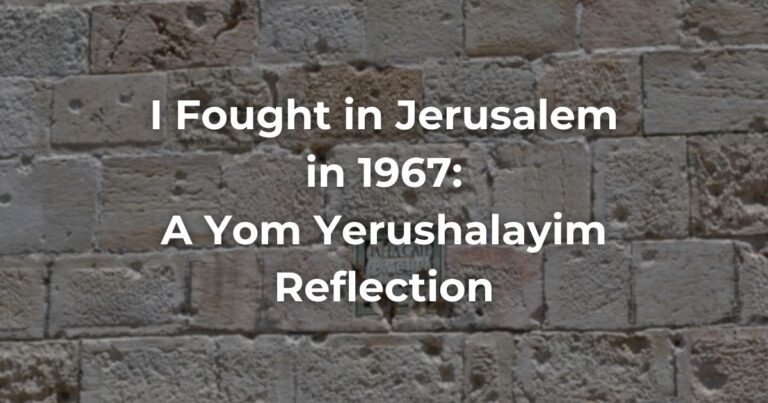This piece is part of Exploring Judaism’s 5784 Passover Reader. Download the whole reader here.
Karpas is an iconic part of the Passover Seder, and no one ever skips it. Karpas is the third item in the order of operations at the seder and we are instructed to eat a green vegetable. Karpas brings a little nosh early to what could be a lengthy conversation and meal. This vegetable, often parsley (but could also be lettuce), is customarily dipped in salt water, not once but twice.
This custom comes from the MishnahA collection of rabbinic teachings edited in Israel around 225 CE. Organized in six sedaraim by subject matter and dealing with both ritual and civil law. Both the Jerusalem and Babylonian Talmud are expansive discussions of the Mishnah. Read more Pesachim 10:3, which says:
“They bring it in front of [the person at the Seder table, and they] dip the lettuce until they reach the appetizer of bread [which is maror, the bitter herbs].”
What is missing from this instruction? Salt water.
The reason for the salt water is commonly stated in many haggadot, unattributed, as “a way for us to represent the tears and sweat of our ancestors who were slaves in Egypt.”
This is a beautiful sentiment. Placing ourselves in the mindset of our ancestors is a key element of the Seder. However, this explanation does not appear in any of the rabbinic sources until the mid-1600s.
The Rambam in the 11th century says that people would use charoset, and the earliest reference to salt is in the Tosafot in the 13th century, suggesting that some people used vinegar instead.
In a journal article titled, “Our Salty Tears: The History and Significance of an Interpretation of Dipping in Salt Water at the Seder,” by Rabbi Zvi Ron, he writes,
“The earliest explanation commonly quoted was offered by R. Aharon Teomim (1630–1690), based on kabbalistic concepts that water represents Chessed [loving-kindness] and salt represents Din [judgement]… However, it should be noted that this should not necessarily be considered an explanation for the custom; it is more properly understood as the kabbalistic meaning behind a ritual.”
He goes on to identify various possible explanations over the past three hundred years for the salt water we use at the seder. In particular, he suggests that
“In the time of the Rishonim and early Acharonim (11th to 15th centuries), when salt water was still recognized as a standard vegetable dip, there was no need to provide a symbolic meaning for the dips.”
Which is to say, since we’re no longer using salt water as a standard dressing for vegetables, it jumps out to us as an opportunity to interpret and explore this moment in the seder.
In fact, we don’t have to use salt water at all.
Instead, we could use anything that jumps out to us as notable and possibly surprising. Enough that that “the children will notice and ask” which is the reason the TalmudReferring to one of two collections, the Jerusalem and Babylonian Talmuds, edited in the 6th century, that contains hundreds of years of commentary, discussion, and exploration of the ideas in the Mishnah. One could describe it as Mishnah + Gemara = Talmud Read more (Pesachim 114b) gives for this moment in the seder at all.
In addition to saltwater, our family has introduced honey as one of our dipping options at our seder. Yes, parsley and honey can be a strange flavor combination, but it has become one of my most treasured moments in the seder.
It is important that even in the moments of sadness for our ancestors, at the height of slavery and struggle, and in our own living experience: there are good things to be noticed and to feel grateful for having.
Honey is sweet, reminding us of all the joyous moments in life, the smiles, laughter, and embraces of loved ones.
Honey is thick, teaching us that even though the difficult moments are easier to remember, we should hold tightly to the sweet ones.
Honey lasts almost forever, inviting us to hold on to these positive memories and moments throughout our lives.
While we have integrated honey into our seder, there are so many dipping options one can use to invite other ideas into the meal. Saltwater came to us from a history of salad dressings that we transformed into meaning, but it doesn’t have to end there. This early moment in the seder calls out for more meaning, question-asking, and delicious ways to start our meal together.
Author
-

Rabbi Jeremy Markiz is a teacher and consultant. Based in the Washington, DC area, he teaches the TorahRefers to the first five books of the Hebrew Bible, the Tanakh, also called the Five Books of Moses, Pentateuch or the Hebrew equivalent, Humash. This is also called the Written Torah. The term may also refer to teachings that expound on Jewish tradition. Read more of personal growth, meaning and intentionality, and making the world a better place. He writes a newsletter called, With Torah and Love. Rabbi Markiz helps clergy, congregations, and Jewish organizations grow and communicate clearly in the digital world, develop effective strategies, and solve problems with his consulting firm, Next Level Rabbinics.
View all posts






